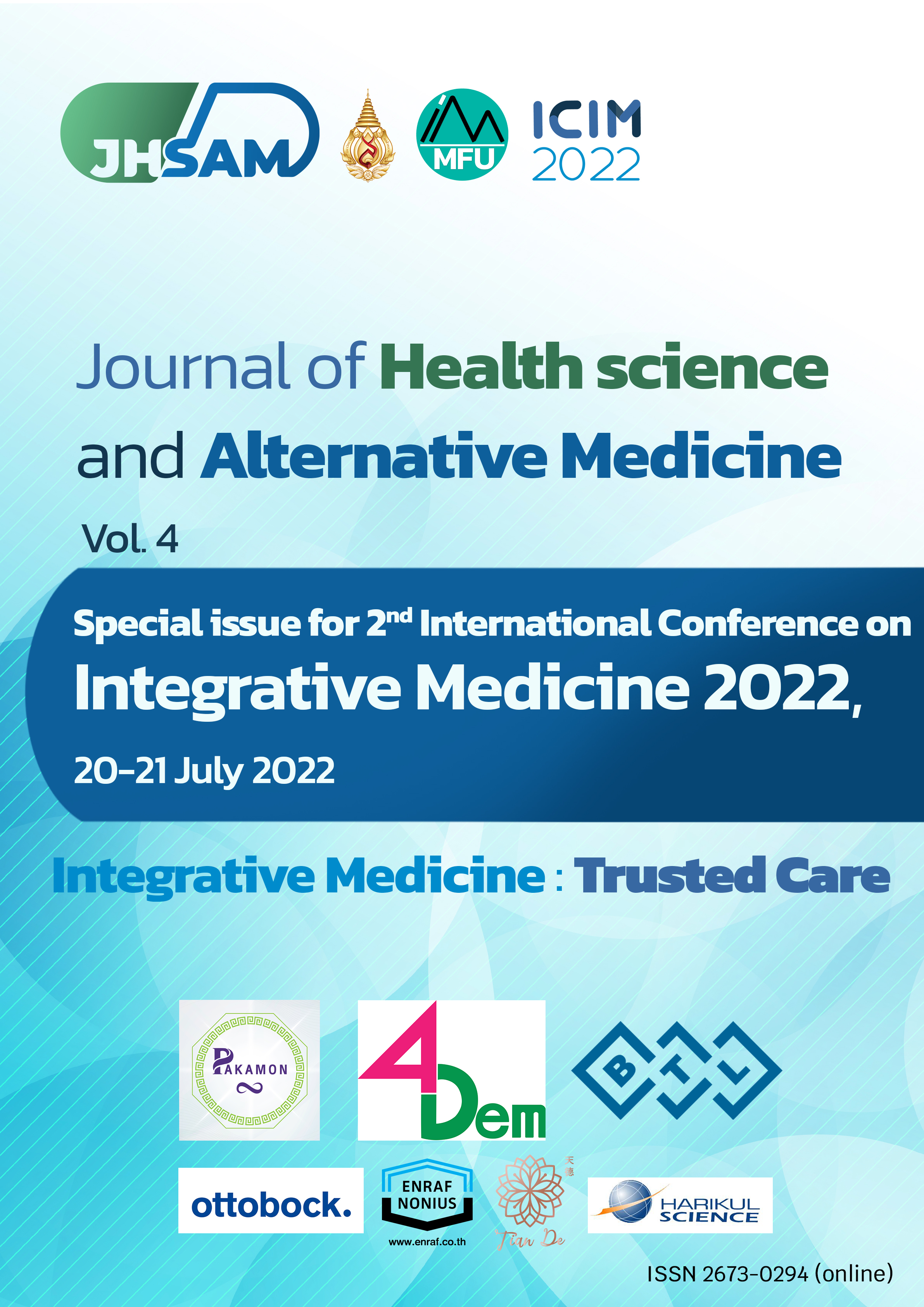A23. Comparison Physiological Effect and Comfortable Sensation between Wearing Surgical Face Mask and Muslin Face Mask during Exercise in Healthy Subject: A Pilot Study
Main Article Content
Abstract
Introduction: Widely spread of COVID-19 virus worldwide leads to changes in daily living situations such as; keeping social distance, frequently cleaning hands, and wearing a face mask all the time even while exercising to against the spread of the virus.
Objective: This study aims to compare the effect of wearing 3 types of face masks; Non face masks (NFM), Surgical face masks (SFM), and Muslin Face masks (MSM); while exercising with moderate intensity to cardiovascular response and comfortable feeling while wearing face mask in healthy adult participants.
Methods: Cross-over design was used to investigate the study’s objective. Ten healthy participants aged 20.9±1.5 years old, BMI of 21.26±1.33 kg/m2 performed treadmill exercise while wearing NFM, SFM, and MFM with an intensity of 40-59% Heart rate reserve (HRR) for 30 minutes. Perceived Comfort Scale (PCS) and Cardiovascular response including; Blood pressure (BP), Respiratory rate (RR), Oxygen Saturation (O2sat), Rating Perceived Breathlessness (RPB), and Borg Rating of Perceived Exertion (RPE) were recorded in each exercise session with a wash-out period for 48 hours.
Results: All participants can complete the exercise with moderate intensity while wearing 3 types of face masks. After 3 sessions of exercise, systolic BP and PCS showed a significant difference between types of face masks (p-value = 0.024, 0.033, respectively). Change SBP between baseline to exercise have significant difference when compare NFM vs SFM (p-value = 0.042) and NFM vs MFM (p-value = 0.035); Change SBP value equal 9.3±11.52 mmHg in NFM, 18.8±7.38 mmHg in SFM, and 18.9±6.87 mmHg in MFM. PCS scores have a significant difference in NFM vs MFM; score 25.9±2.02 and 28.5±3.41, respectively (p-value = 0.018). Diastolic BP, RR, O2sat, RPB, and RPE were not found significantly different between groups.
Conclusion: Wearing SFM and MFM while exercising with moderate intensity leads to increased SBP and discomfort feeling more than NFM. However, it seems to be that wearing SFM and MFM does not affect exercise performance and dangerous responses for healthy adults. According to this pilot study, further studies with a larger sample should confirm these initial results.
Article Details

This work is licensed under a Creative Commons Attribution-NonCommercial-NoDerivatives 4.0 International License.
JHSAM publishes all articles in full open access, meaning unlimited use and reuse of articles with appropriate credit to the authors.
All our articles are published under a Creative Commons "CC-BY-NC-ND 4.0". License which permits use, distribution and reproduction in any medium,
provided that the original work is properly cited and is used for noncommercial purposes.
References
-

